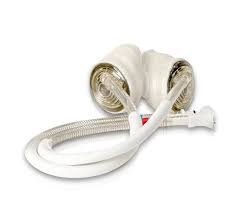
Picard Medical, Inc., parent company of SynCardia Systems LLC, maker of the world’s first total artificial heart approved by both the U.S. FDA and Health Canada, announced that it has completed the first in vivo implantations of the fully implantable Emperor Total Artificial Heart (TAH). The positive outcomes observed following the implantations mark a major milestone in the development of the Emperor platform as the next-generation successor to the clinically proven, FDA-approved SynCardia Total Artificial Heart (“STAH”).
Patrick NJ Schnegelsberg, CEO of Picard Medical, stated, “We are excited by these initial data. The successful completion of these first implantations brings SynCardia back to the forefront of innovation in total artificial heart technology. This milestone strengthens our position as the global leader in total artificial hearts and is yet another step that validates the potential of the Emperor platform.”
The Emperor TAH was successfully implanted in three pre-clinical models, and each model was taken off bypass without any issues. Throughout the observation periods, the device provided full and stable blood circulation, used energy efficiently, and operated without technical problems. The Emperor TAH performed in a way that closely mirrors how a natural human heart works. It produced stable hemodynamics (steady, controlled blood flow), showed physiologic preload sensitivity (the pump output increased naturally as more blood entered the device), and maintained afterload independence (consistent pumping performance even as systemic vascular resistance changed). These behaviours reflect the Frank-Starling response, the natural mechanism by which the heart adjusts its pumping strength based on how much blood fills it. All results were consistent with Picard Medical's laboratory performance goals for the Emperor platform.
“Our very positive experience with implanting the next-generation TAH in three separate in vivo models confirms that the Emperor platform is progressing as designed and confirms its potential to become a fully implantable alternative to heart transplantation,” added Andre R. Simon, MD, PhD, FRCS, Vice President of Medical Affairs. “The performance characteristics observed in each of these acute experiments validate key engineering choices and support continued program acceleration for this novel device, which could be an even further improvement to a patient’s quality of life.”